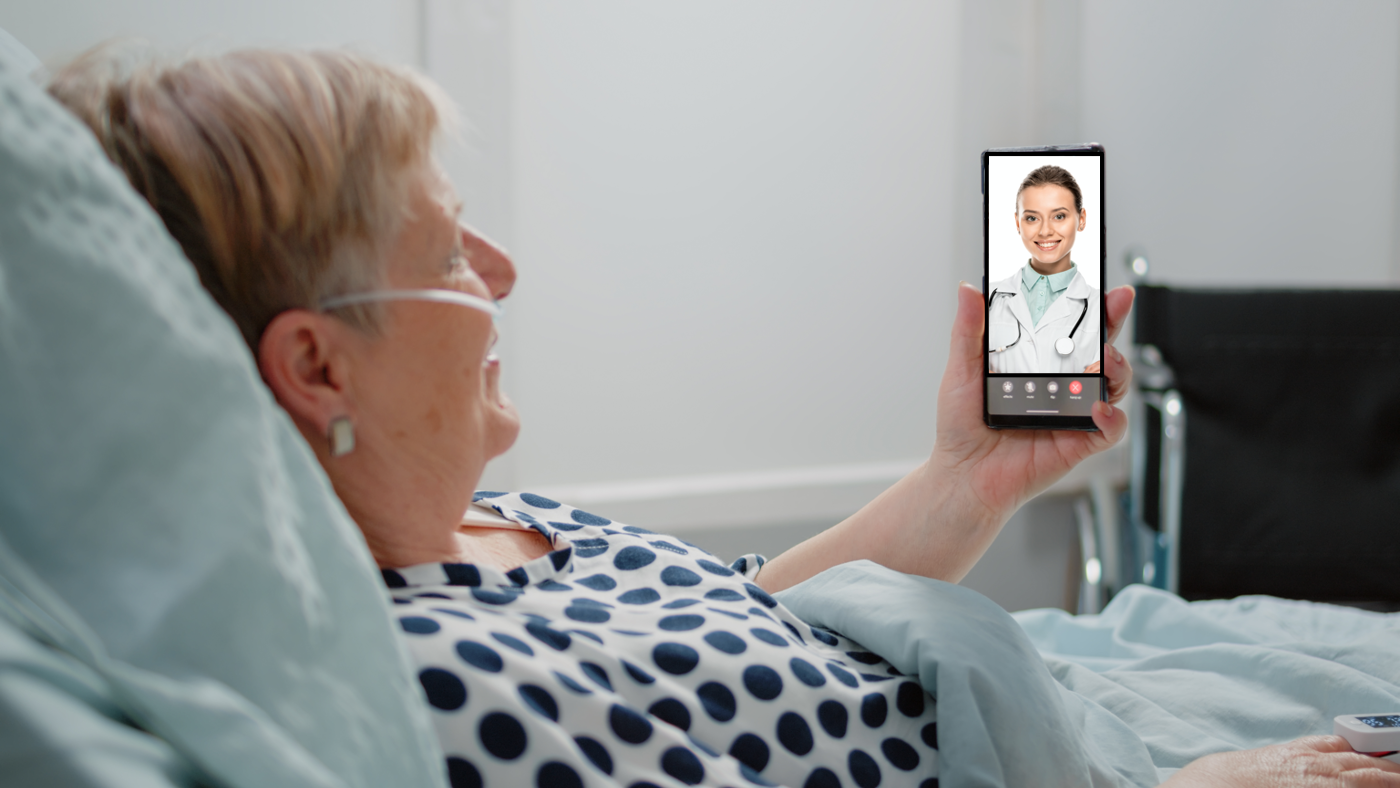What is a virtual ward?
A virtual ward mimics a hospital ward but the patient is cared for safely in their own home, supported by hospital and community healthcare professionals, rather than being physically in hospital.
The idea of virtual ward beds gained momentum when the coronavirus broke out globally, in order to treat patients with COVID at home and prevent further spread of the virus. People were encouraged to stay home and received care and support via telemedicine such as video and audio consultations, temperature, spirometry and pulse oximetry sensors, e- prescriptions, as well as patient monitoring apps, saving many thousands of hospital bed days during this crisis.
Dangerously sick people were cared for in hospital under constant observation, but those who could be kept at home were encouraged to stay there and be supported remotely.
A virtual ward bed gives people access to healthcare without the need for travel to a hospital.
What is healthcare monitoring technology?
A patient monitor is a device used to record, measure and display multiple biometric values such as heart rate, blood pressure, body temperature, SpO2 and more. Hospital monitoring has been around for a long time and more recently remote patient monitoring has grown considerably. Many people now have monitoring devices in the form of smart wearable watches equipped with sensors that measure blood pressure, heart rate and sleep quality.
The introduction of Internet of Things (IoT) and advanced 4G/5G/6G technologies has enabled healthcare to evolve from just face-to-face consulting to consulting with telemedicine where it is appropriate. IoT for healthcare has enabled clinicians to track real-time patient data and through system alerts, trends, thresholds, can prevent emergency situations like heart failure, diabetes, asthma attack, cardiac arrest, etc.
A patient’s basic health signs as well as the room condition can be monitored in real-time. Sensors can be used to capture the data from the patient whether at home or in a hospital bed. The patient data is monitored by appropriate medical staff, where they can monitor the situation of the patient and intervene when necessary.
Virtual Wards today
An ageing population with chronic conditions, escalating costs and lack of healthcare resources, is putting severe pressure on the healthcare systems globally. Fortunately technology has advanced and can be used to address some of the problems. Virtual wards are currently in place in many parts of England, for example, supporting people with frailty or acute respiratory infections.
The NHS is establishing virtual wards to support people in their homes, including care homes. NHS England is guiding all integrated care systems (ICSs) to create between 40 and 50 virtual ward beds per 100 000 of the population by December 2023, around 25 000 across England, according to the British Medical Journal.
How do virtual wards work?
Patients are referred into the virtual ward by healthcare professionals such as GPs, ambulance service, hospital teams and other specialist community services in the UK. Senior community nurses follow up the referral by assessing referred patients at home. For an elderly patient, the assessment would be discussed with the consultant geriatrician to establish if care at home on the virtual ward is suitable. This is followed by a discussion with the patient and their carers.
A consultant-led multidisciplinary team meeting review patients regularly after the patient is admitted to the virtual ward. The patient is supported in their home with daily monitoring, medication reviews, clinical observations and MDT reviews.
Benefits of Virtual Wards
Virtual wards can allow for admittance avoidance into the Emergency Department as well as supporting an earlier safe discharge of some patient cohorts from hospitals. The cohorts that are gaining momentum are frail/elderly and respiratory patients but many more cohorts can be explored for suitability.
Virtual wards can relieve the pressure on hospital resources and facilitate shared responsibility of care with the community healthcare services. It means patients can be in the comfort of their own homes while recovering, secure in the knowledge that they are being monitored and cared for.
Increasing physical bed numbers requires capital investment in buildings. Decision making is slow and building the resources is slow. Virtual wards can be set up more easily with a fraction of the capital costs.
“Caring for people in their own homes has contributed to fewer hospital-acquired infections, falls and complications. For example, patients with delirium can find admission very distressing, so these patients are cared for much more successfully at home,” according to an NHS case study on a frailty virtual ward in Leeds.
BlueEye Virtual Ward is an integrated turnkey platform from RedZinc, consisting of wearable sensors, video technology and software platform to monitor and deliver care to the patients at home.
Contact us today at support@blueeye.video to discuss BlueEye virtual ward.


